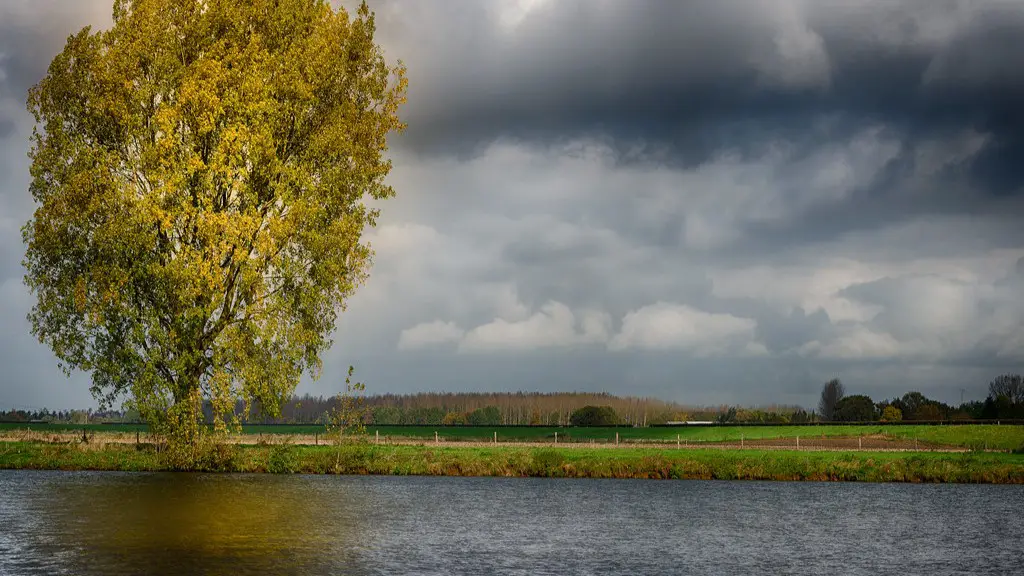A dry, monotonous landscape is normally not associated with the Mississippi River. In recent years, however, features more akin to the desert have been gradually appearing – rock terraces, exposed sandbars and distant shorelines which appear to extend well beyond their natural boundaries. The reason? The Mississippi River’s water levels have been falling precipitously in recent years, presenting major unforeseen problems for the millions of people who depend upon the river for their livelihoods and daily needs.
Today, around 90% of the river’s flow comes from sources such as rainwater and snowmelt. Coupled with this, many fear that the over-harvesting of ground reserves, to use for irrigation and soil reclamation, could be a major reason for the decline in water levels. Despite this however, the greatest factor seems to be gradual changes in the nature and behavior of the river, a phenomenon which has can be traced back hundreds of years.
Towards the end of the eighteenth century, for example, people began to actively alter the banks and floodplains of the Mississippi in order to reduce the potential for flooding. By the late twentieth century, multiple dams along the river’s length began to be used for navigation and also to generate hydropower. These developments have created their own unique set of problems, not least because they heavily reduce the amount of water that can flow downstream – a decrease of as much as 15-20%.
The situation is made worse by climate change. In recent years, the midwest of the United States has experienced greater temperatures and reduced rainfall compared to previous decades. These effects are more pronounced in the case of the Mississippi River – its water reserves have been known to reduce as much as 17 feet in times of drought – leading to fears that the river could soon run completely dry. According to Professor Mitchell Soares, a researcher at the University of Michigan, the weather’s impact on the river could be “the most pressing issue facing industries located on the banks of the Mississippi.”
The good news, however, is that the long-term effects of changing water levels are now understood, and action has been taken to mitigate further declines by investing in conservation efforts. Major changes to dam operations and floodplains have been initiated, as well as a greater emphasis on decreasing the amount of polluted runoff and increasing the amount of spring flooding can be seen. These measures will hopefully reduce the burden of low water levels, but remain just one part of a much larger puzzle.
How has the Low Water Level of the Mississippi Affected the Local Ecosystem
Low water levels along the Mississippi River, while worrying, have fortunately not yet caused any catastrophic consequences. However, the overall impact has been drastic. With the fall of water come the reduced transport of sediment downstream, the destruction of wetlands and the destruction of habitats for spawning populations of many species. According to Billy Zeitler, a researcher for the US Geological Survey, “the nutrient poor water of the Mississippi is vital for the area’s wildlife – it acts as a breeding ground for species such as Bass, Walleye and Catfish, which are all of great value to local fishermen, who in turn support local economies. Low levels are bound to have severe, long-term consequences, both economic and ecological”.
Furthermore, the Mississippi’s reduced flow can change the course of neighbouring bodies of water, the most famous example of which is the Atchafalaya River – the lifeblood of South Louisiana. Here, due to the reduced amount of water which is being directed elsewhere, the river is swelling, a phenomenon which could eventually sever the river in two major sections, leading to a major disruption of existing supply chains.
Developments Aimed at Managing Low Water Levels
In recent years, a number of steps have been taken to manage the low water levels of the Mississippi River. This is largely due to the wide-reaching implications of the issue , with state governments and federal agencies collaborating in order to come up with a solution. Timely and appropriate water level management is important for long-term safety and ecological stability in the region.
At present, the US Army Corps of Engineers is one of the major organisations concerned with Mississippi River management. Through the construction of numerous reservoirs and dams, the Corps hopes to both address issues related to flooding and also safeguard against further drought. Large financial investments have been also been involved, particularly with regards to expanding navigation and shipping on the river. Regulations which limit pollutants entering the Mississippi have also been put in place, in an effort to maintain sufficient water volume and reduce the impact of larger ecological changes.
In the long-term, the Mississippi River is an important economic resource, particularly given its role in transport, levee protection and recreation throughout the region. As such, long-term solutions must be found – whether that be through restoring its natural environment or improving existing engineering structures.
What Other Factors Have Contributed to this Drought?
One of the major causes of the Mississippi River’s low water levels has been an overall decrease in precipitation throughout the region. The Midwest has, in recent decades, seen large drops in rainfall – in some cases, as much as 25%. This has posed major problems for the river, and in turn has caused problems linked to drought and even desertification, particularly in South Louisiana.
In addition to this, other factors have also been involved. One of the major contributors has been agricultural irrigation, which relies upon water extracted from the underground reserves, known as aquifers. This has severely depleted the Mississippi’s resources – in some parts, up to 25% more water is taken out than what is put in – and the river infrastructure of the midwest is increasingly feeling the pressure.
Fortunately, efforts have been made to combat the issue. Ganges Conservation, for example, is a non-profit organisation focused on protecting and restoring the health of the river by managing local water usage. The organisation also aims to raise awareness about wise groundwater management and reduce environmental degradation.
Conclusion
The low water levels of the Mississippi River pose a major issue for the local communities, businesses and people affected by the river. From reduced sediment transport downstream to a major depletion in aquatic populations, the effects are becoming gradually more apparent and long-term solutions must be found in order to combat the problem. The US Army Corps of Engineers, alongside multiple state governments and non-profit organisations, has already been active in this regard, and is looking to address both the agricultural and environmental causes of the river’s decline. While these efforts have been encouraging thus far, progress is slow, and much more must be done.



